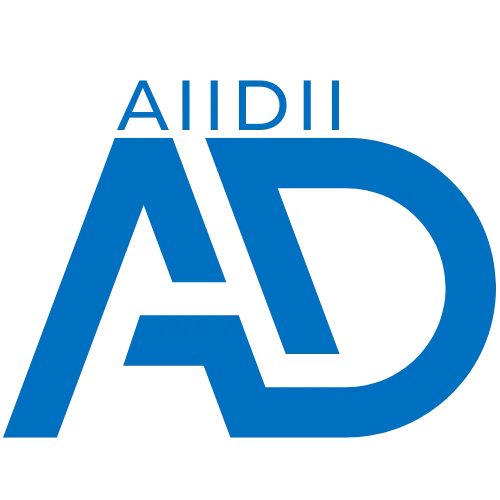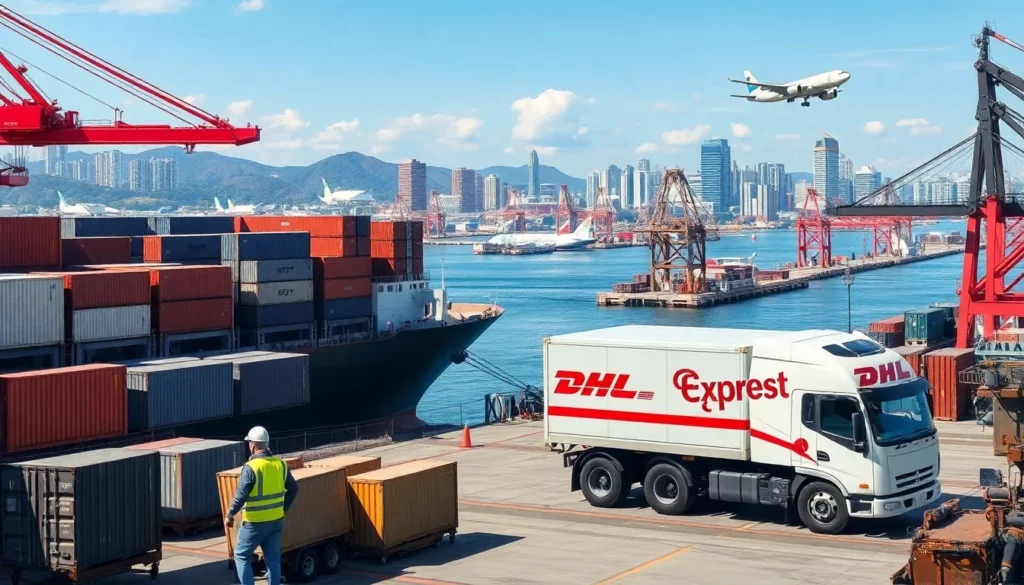When importing goods from China to Japan, your decisions on shipping methods, cost management, and regulatory compliance directly shape your supply chain’s efficiency. This guide breaks down the best shipping options, cost structures, and compliance steps to help you streamline operations and minimize expenses. You’ll gain the tools to choose between sea freight, air freight, and express shipping based on your volume, timeline, and budget needs.
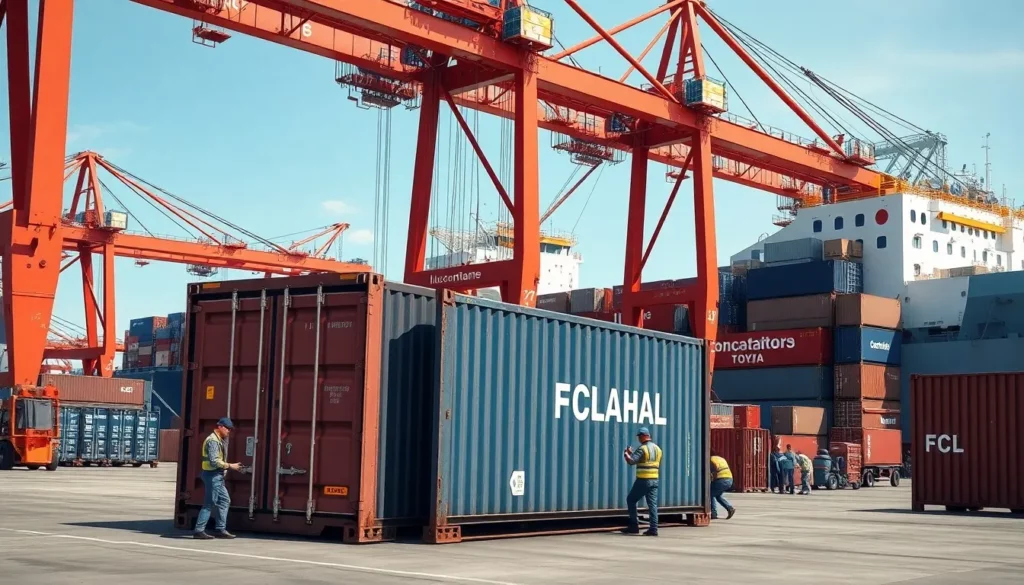
Shipping Method: Balancing Cost, Speed, and Volume
Sea Freight: Your Go-To for High-Volume Shipments
Sea freight handles about 75% of cargo between China and Japan, making it the top choice for cost-conscious businesses with large shipments. Its short port-to-port routes offer a balance of affordability and reliability for your supply chain.
Full Container Load (FCL): Cost-Effective for Large Retailers
With FCL, you get a dedicated container for your goods, ensuring better security and lower per-unit costs for high-volume shipments. Rates typically range from $500–$1,500 for a 20-foot container and $900–$1,380 for a 40-foot container, depending on the route. You control loading, minimizing handling risks and ensuring predictable delivery schedules.
- Best for: Large retailers or manufacturers with consistent, high-volume orders.
- Example: A furniture importer I worked with chose FCL to ship 20-foot containers from Shenzhen to Yokohama, cutting costs by 30% compared to LCL for their bulky inventory.
Less than Container Load (LCL): Flexible for Smaller Businesses
LCL lets you share container space, paying only for the cubic meters your goods occupy—typically $30–$40 per cubic meter. It’s perfect for smaller shipments that don’t fill a full container but are too large for air freight.
- Best for: SMEs or e-commerce brands with variable order sizes.
- Tips: Use LCL for seasonal products or test shipments to keep cash flow flexible.
FCL vs. LCL: How to Decide
Your choice hinges on shipment volume and frequency. FCL becomes more cost-effective above 15–20 cubic meters. Opt for FCL for fragile or high-value goods to reduce handling risks, or choose LCL for smaller, frequent orders to maintain flexibility.
- Break-even point: Calculate costs by comparing LCL’s per-cubic-meter rate to FCL’s flat container rate.
- Important warnings: LCL involves more handling, increasing damage risks for delicate items.
Key Sea Routes and Ports
Major routes connect Shanghai, Shenzhen, and Ningbo to Tokyo, Yokohama, and Osaka. The fastest route, Shanghai to Hakata, takes about 1 day and 5 hours. Transit times range from 5–12 days depending on the port pair, with multiple weekly sailings for scheduling flexibility.
| Route | Transit Time | Key Ports |
|---|---|---|
| Shanghai–Tokyo | 6–11 days | Shanghai, Tokyo, Yokohama |
| Shenzhen–Osaka | 5–12 days | Shenzhen, Osaka, Nagoya |
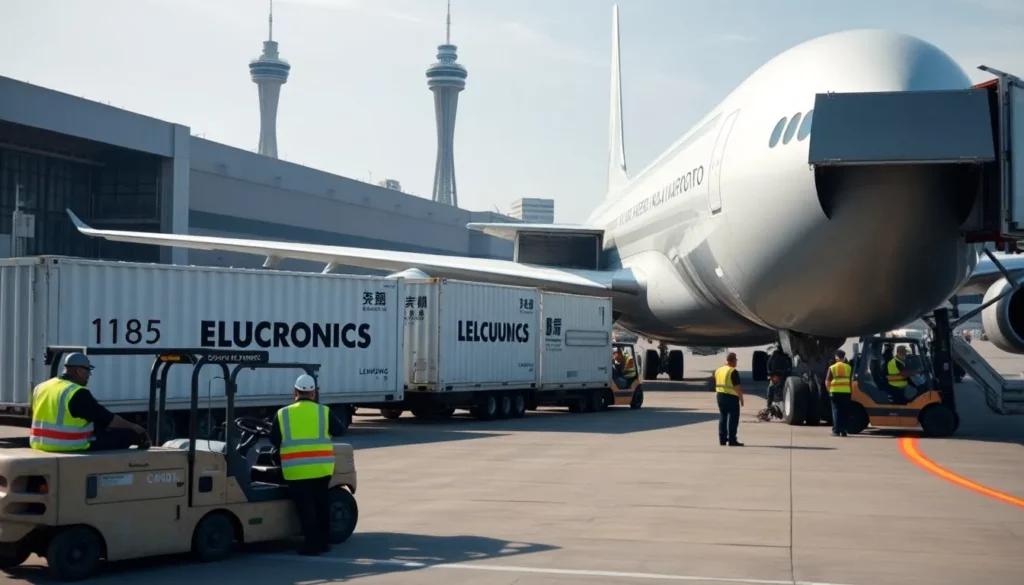
Air Freight: Prioritizing Speed and Security
Air freight delivers goods in 3–6 days, ideal for time-sensitive or high-value products. It bridges the gap between sea freight’s affordability and express shipping’s speed.
Standard Air Cargo vs. Express Air Courier
Standard air freight costs $3.0–$7.0 per kilogram, while express couriers charge $5–$8 per kilogram for door-to-door service, including customs clearance. Standard air offers flexibility for larger volumes, but express simplifies logistics for urgent needs.
Key takeaway: Choose standard air for bulk electronics; use express for urgent prototypes.
Ideal Use Cases
Air freight suits electronics needing PSE certification, luxury goods, or just-in-time components. Faster delivery reduces inventory costs and keeps your products market-relevant.
Example: An electronics importer I advised used air freight to rush PSE-certified components to Tokyo, meeting a tight product launch deadline.
Major Air Cargo Hubs
Shanghai Pudong, Guangzhou Baiyun, and Beijing Capital connect to Narita, Haneda, and Kansai airports. Daily flights ensure flexibility, even during peak seasons.
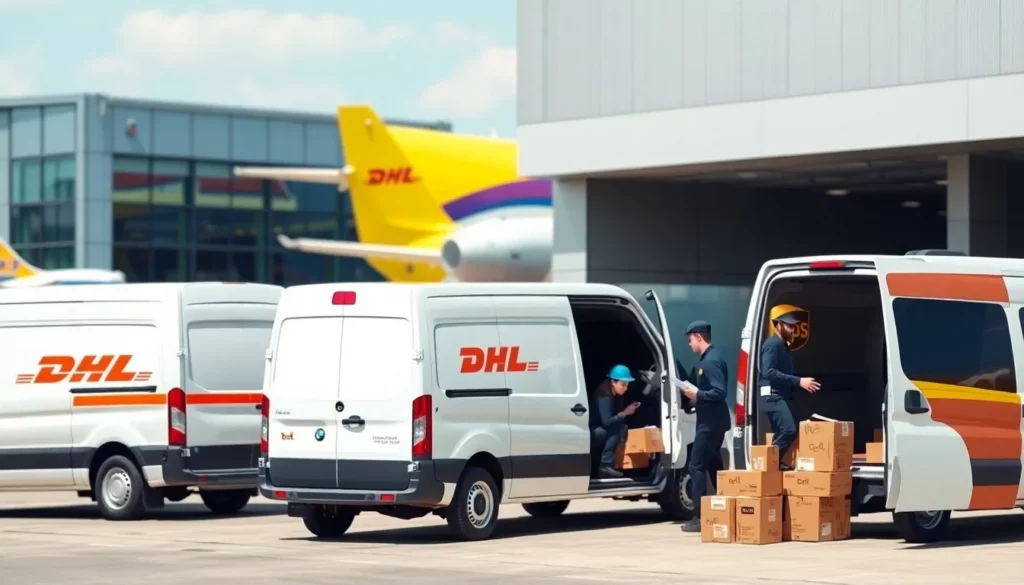
Express Couriers: Fastest for Small, Urgent Shipments
Express couriers like DHL, FedEx, and UPS deliver in 24–48 hours, perfect for low-volume, high-priority shipments. They’re ideal for samples, prototypes, or e-commerce orders where speed is critical.
- Best for: Urgent documents or small, high-margin items.
- Tips: Use express for customer samples to secure deals quickly.
Door-to-Door Service Explained
Express services handle pickup, customs, and delivery as one package, simplifying logistics but at a premium cost. All-in pricing covers duties and taxes, offering cost predictability but less control over clearance.
Comparison: Which Method Suits You?
| Method | Transit Time | Cost Level | Best Volume | Security | Tracking |
|---|---|---|---|---|---|
| Sea FCL | 10–15 days | Lowest | >15 CBM | High | Standard |
| Sea LCL | 10–15 days | Low | 1–15 CBM | Medium | Standard |
| Air Freight | 3–6 days | Medium | 100–1000 kg | High | Good |
| Express | 1–3 days | Highest | <100 kg | Highest | Excellent |
Best practices: Large retailers should lean toward FCL for cost savings; SMEs can use LCL for flexibility; high-tech firms benefit from air freight’s speed.
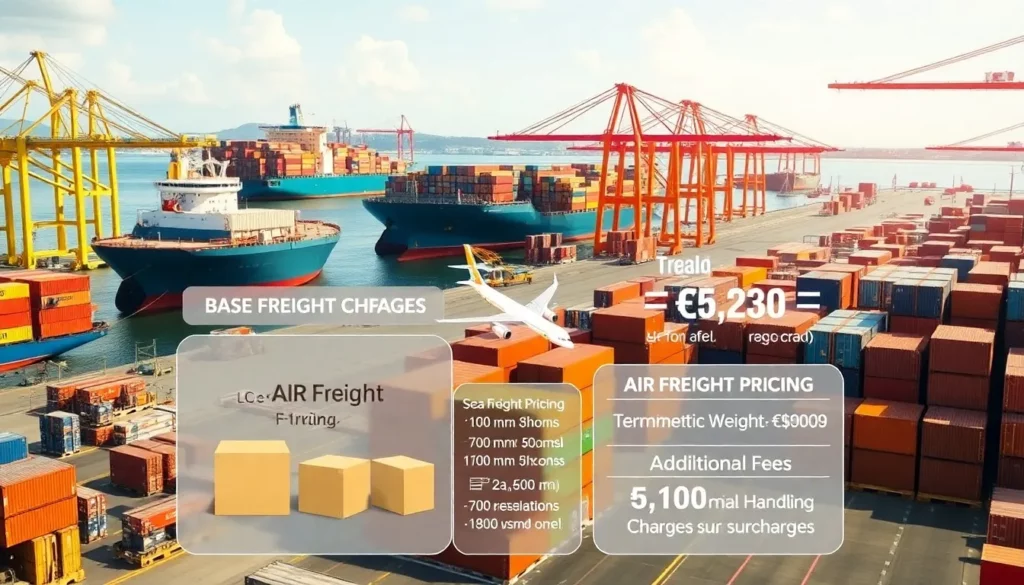
Breaking Down Shipping Costs
Base Freight Charges
Understanding pricing structures helps you budget accurately. Base charges are just the start—additional fees can significantly impact your total costs.
Sea Freight Pricing
LCL charges $30–$40 per cubic meter, while FCL offers flat rates: $500–$1,500 for a 20-foot container, $900–$1,380 for a 40-foot container. Rates vary by season and route.
Air Freight Pricing
Air freight charges the higher of actual or volumetric weight (length × width × height ÷ 6000). Rates range from $3.0–$7.0 per kilogram. Optimize packaging to reduce volumetric weight.
Tips: Compress packaging to lower chargeable weight for air shipments.
Additional Fees and Surcharges
Surcharges often exceed base rates, so factor them into your budget.
Origin and Destination Fees
Terminal Handling Charges (THC) add $50–$150 per container. Documentation fees for bills of lading or customs forms cost $25–$75 per shipment. Origin fees cover pickup and security in China; destination fees include Japanese port handling and delivery.
In-Transit Surcharges
Bunker Adjustment Factor (BAF) adds 10–20% during high fuel price periods. Emergency Risk Surcharge (ERS) applies during disruptions. Currency Adjustment Factor (CAF) offsets exchange rate changes.
Important warnings: Always request updated quotes to account for fluctuating surcharges.

Japan Customs: Duties and Taxes
Japan’s tariffs are low (0–4% for most goods), but clothing (9%) and agricultural products (15.7%) face higher rates.
Step 1: Find Your HS Code
Your product’s HS code determines duties and requirements. Misclassification leads to delays or penalties. Use Japan’s Customs tariff schedule or a broker for accuracy.
Step 2: Calculate Landed Cost
Landed cost = CIF (Cost, Insurance, Freight) value + (CIF × Duty Rate) + ((CIF + Duty) × Consumption Tax Rate). Consumption tax is 10% (8% for some foods).
Anti-Dumping Duties
Certain Chinese goods face anti-dumping duties to protect Japanese industries. Check Japan Customs for applicable tariffs, which can significantly raise costs.
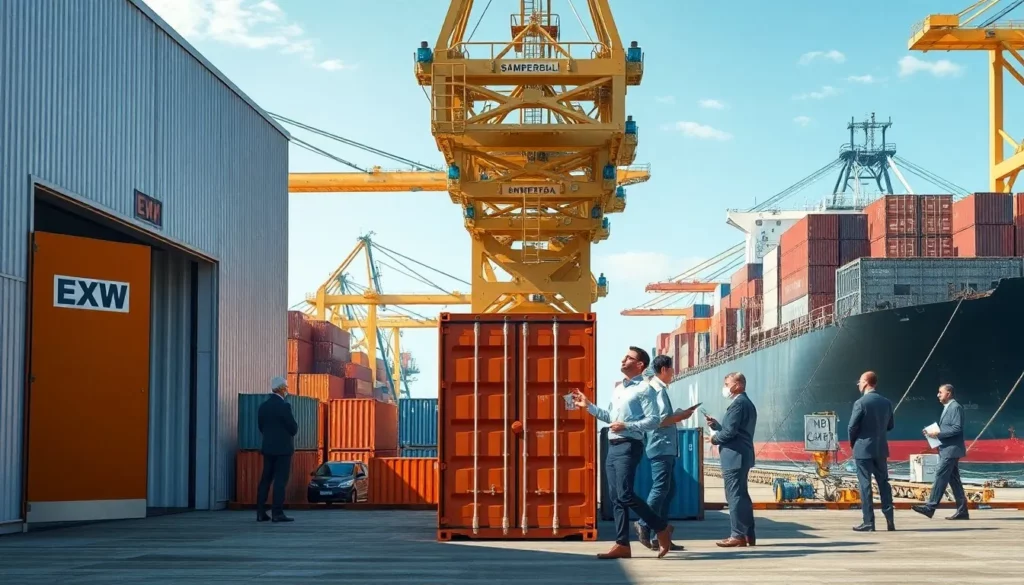
Incoterms: Your Cost and Responsibility Guide
Incoterms define who pays what and when risk transfers between you and your supplier.
FOB vs. EXW
FOB has your supplier handle export clearance and port delivery in China, balancing control and responsibility. EXW puts all logistics on you from the supplier’s door, requiring strong local expertise.
CIF vs. DDP
CIF includes shipping and insurance in the supplier’s quote, but you handle Japanese customs. DDP makes the supplier responsible for all costs and delivery, but often with markups.
- Best practices: Choose FOB for control and transparency in B2B imports.
- Example: An importer I assisted switched to FOB from CIF, saving 15% by negotiating directly with their freight forwarder.
Why FOB Wins for B2B
FOB lets you select your freight forwarder and manage Japanese customs, optimizing costs and visibility.
Avoiding Hidden Costs
Hidden fees can erode profits. Plan proactively to avoid surprises.
Demurrage and Detention
Demurrage fees ($20–$200/day) apply if containers stay at ports beyond 7 days. Detention fees ($20–$80/day) hit if you hold containers post-pickup. Clear shipments quickly to avoid these.
Customs and Documentation Fees
Inspections add handling fees. Document amendments cost $50–$100 per change. Late duty payments incur 2–3% monthly interest. Use automated payment systems to stay compliant.
Important warnings: Inaccurate documents trigger costly amendments or holds.
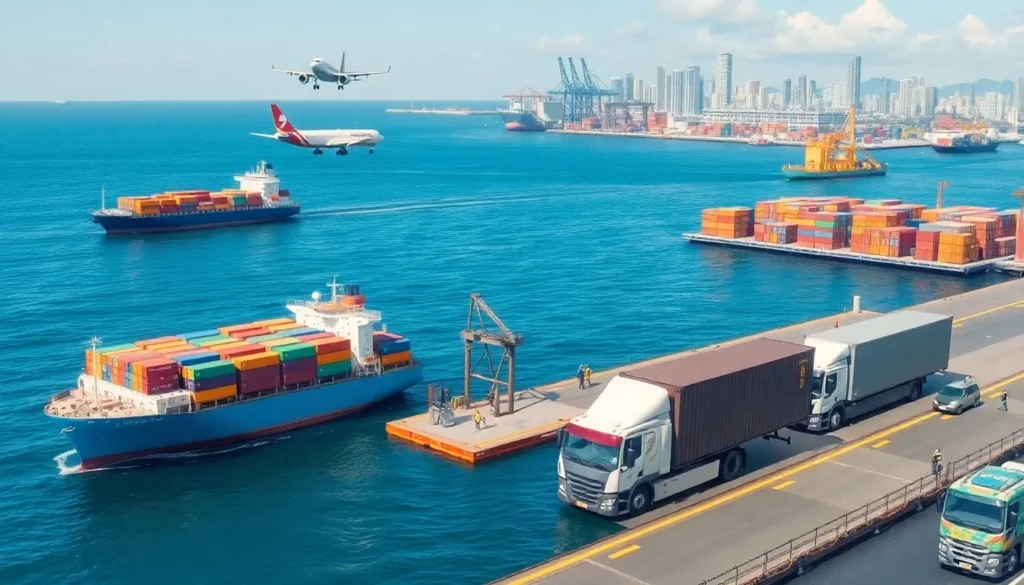
Mapping Your Shipping Timeline
Transit Times by Method
Accurate timelines help you manage inventory and customer expectations.
Sea Freight: 10–15 Days
FCL port-to-port transit takes 5–12 days (e.g., Shanghai–Tokyo: 6–11 days). Add 3–5 days for door-to-door delivery.
Air Freight: 3–5 Days
Airport-to-airport takes 2–5 days. Door-to-door adds 1–2 days for pickup and delivery.
Express Couriers: 1–3 Days
Express services deliver door-to-door in 24–48 hours, ideal for urgent needs.
Complete Door-to-Door Timeline
Total shipping time includes pre-shipment, transit, customs, and delivery.
Pre-Shipment Lead Times
Production and quality checks take days to weeks. Booking and pickup add 1–5 days, especially during peak seasons.
Post-Shipment Steps
Customs clearance takes 1–3 days with proper documents. Final delivery adds 1–2 days, faster in urban areas.
Avoiding Delays
Delays disrupt your supply chain. Plan for these common issues:
Peak Season Congestion
Golden Week (April–May) and Chinese New Year (February) cause 3–7 day delays. Ship outside these periods.
Customs, Weather, and Strikes
Incomplete documents, typhoons, or rare port strikes delay shipments. Use accurate documentation and monitor weather risks.
Best practices: Book early and prepare precise documents to minimize delays.
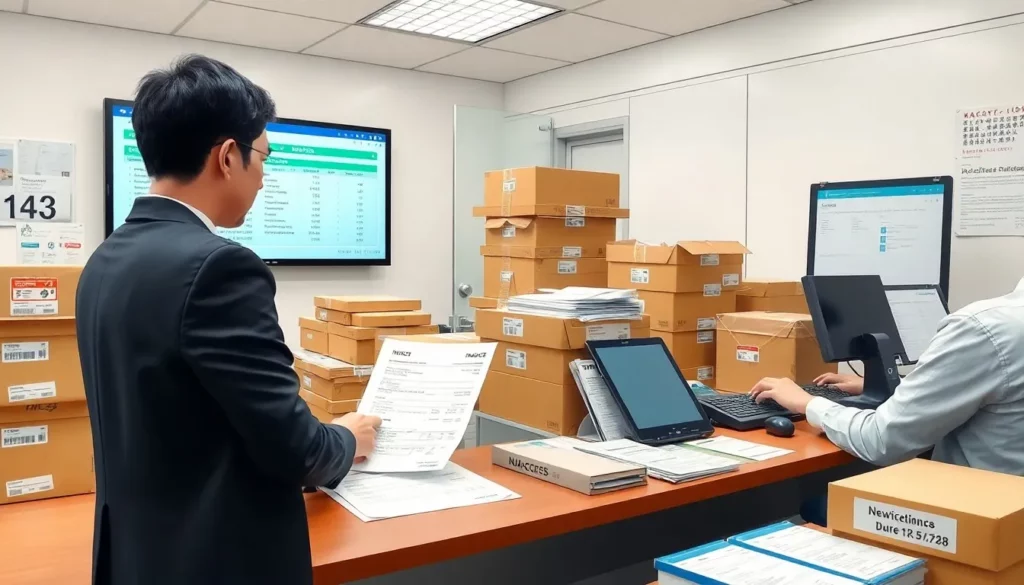
Navigating Japan Customs
Essential Documents
Accurate documents prevent customs holds.
- Commercial Invoice: Include product details, quantities, values, and terms of sale in metric units.
- Packing List: Match the invoice, detailing weights, dimensions, and package markings.
- Bill of Lading/Air Waybill: Ensure consignee details match your import registration.
- Certificate of Origin: Qualifies for trade agreement benefits.
- Licenses/Certificates: PSE for electronics, health certificates for food, etc.
Customs Clearance Steps
Japan’s NACCS system streamlines clearance:
- Lodge Declaration: Your broker files via NACCS with detailed product data.
- Document Review: Customs checks for accuracy; high-risk shipments may face inspection.
- Inspection/Quarantine: Selected goods undergo checks, especially food or electronics.
- Pay Duties/Taxes: Pay via electronic systems for quick release.
Prohibited and Restricted Goods
- Prohibited: Narcotics, firearms, counterfeits.
- Restricted: Food, cosmetics, pharmaceuticals need permits or health certificates.
- Important warnings: Non-compliance risks shipment seizure or penalties.

Managing Risks
Cargo Insurance
Carrier liability ($2.50–$20/kg) often falls short. All-risk insurance covers full CIF value + 10%, with premiums at 0.1–0.5%.
Tips: Document damage immediately for claims, including photos and descriptions.
Packaging and Labeling
Use moisture-resistant materials for sea freight and secure packaging for air. Include clear consignee and handling labels. Comply with ISPM 15 for wood packaging.
Freight Forwarder Selection
Where to Find Partners
- Digital Platforms: Offer instant quotes but less personalization.
- Traditional Forwarders: Provide expertise for complex shipments.
- Networks: WCA or Lognet connect verified providers.
- Referrals: Ask suppliers or peers for trusted recommendations.
Vetting Checklist
- Verify NVOCC, IATA, and Japanese customs licenses.
- Request case studies or references for China–Japan expertise.
- Ensure end-to-end services (e.g., warehousing, customs).
- Test responsiveness with detailed quote requests.
Red Flags
- Unrealistically low quotes (hidden fees likely).
- Poor communication or vague responses.
- No licensed Japanese agent.
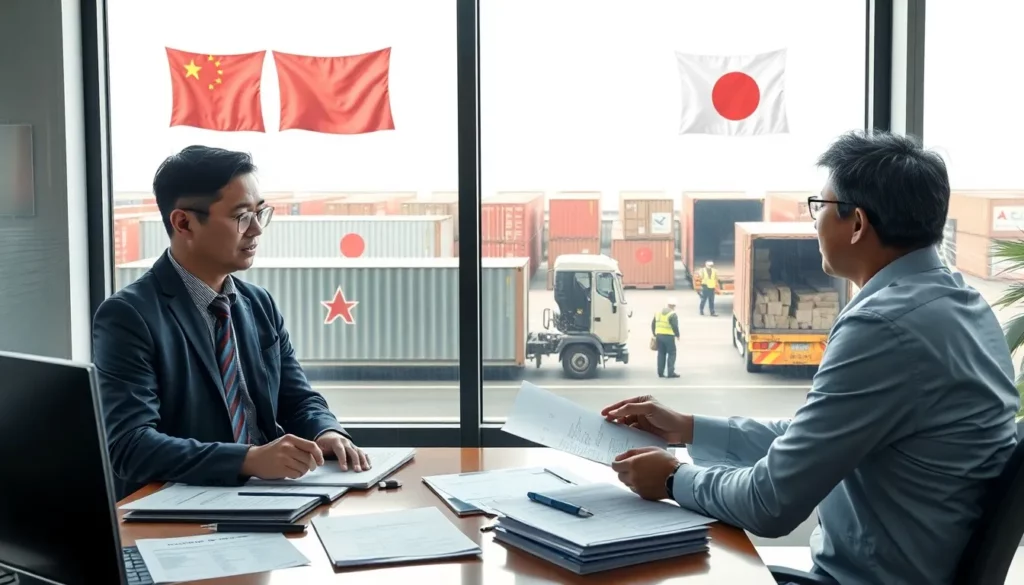
Conclusion
Work with a China–Japan freight specialist to tailor your logistics strategy. Make sure you confirm your supplier’s specs, quantities, and packaging upfront. Request detailed quotes from reliable forwarders and secure your shipment terms in writing. Coordinate pickup and export to clear customs smoothly, track your shipment along the way, handle import clearance promptly, and inspect your goods when they arrive to ensure quality and keep costs under control.
Frequently Asked Questions (FAQs)
1. What documentation differences exist for electronics vs. textiles?
Electronics need PSE certification; textiles require fiber content details. Both need invoices, packing lists, and bills of lading.
2. How do I verify a forwarder’s Japanese agent?
Check credentials with the Japan Freight Forwarders Association and contact client references.
3. How can I reduce air freight volumetric weight costs?
Use compact, dense packaging to minimize dimensional weight.
4. Should I accept CIF or use FOB?
FOB offers better control and cost savings by letting you choose your forwarder.
5. How is consumption tax applied?
It’s 10% (8% for some foods) on CIF value + duties, paid during customs clearance.
